Cedar elm trees are known for being adaptive and providing excellent shade. So it's no surprise that many people see them as ideal additions to their yards. If you're considering adding one of these trees to your yard or garden, you're likely wondering how long they live. We've done the research to bring you the answer.
A cedar elm tree's usual lifespan ranges from 50 to 100 years. But these trees will require a little help to reach their maximum age. In other words, people will need to keep up with their maintenance, such as pruning.
Obviously, the maintenance procedure for cedar elm trees requires a bit more explanation. Our following discussions will go into detail about pruning and other tasks. You'll soon know everything you need to know to make sure your cedar elm can reach that 100-year mark.
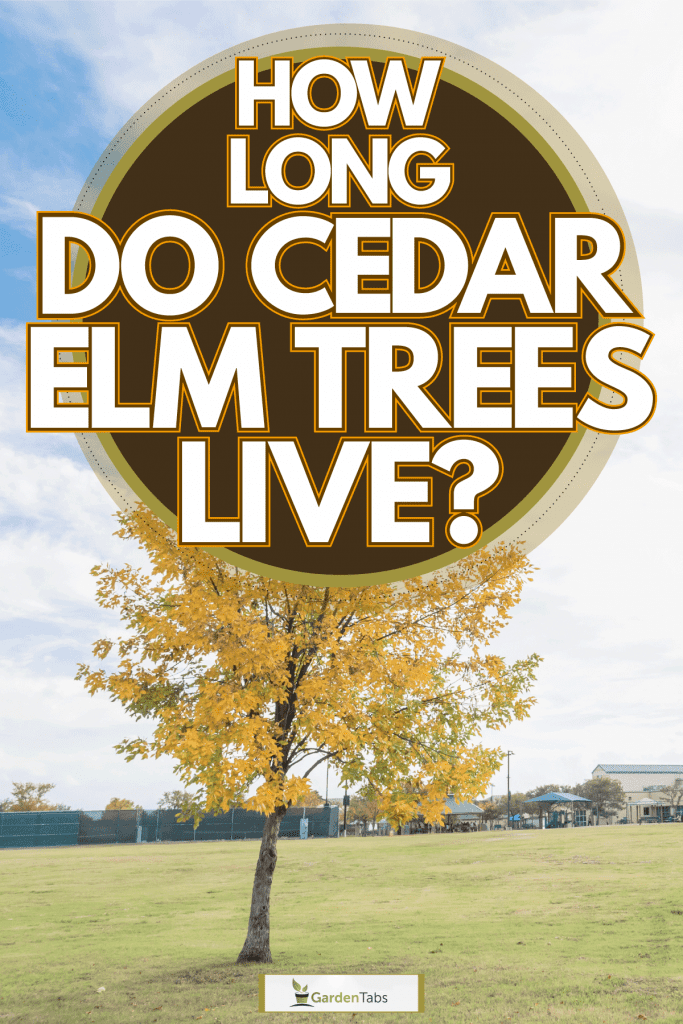
How Do You Take Care of a Cedar Elm Tree?
Let's start with some good news: cedar elm trees are considered low maintenance. Your primary focus will be pruning when it's young. In these pruning sessions, the focus should be on spacing out major branches along its central trunk.
A cedar elm tree could also require regular pruning if it's a street tree. After all, its drooping branches could cause issues for cars and other vehicles. But these trees remain standard options for street areas because of their tolerance to wet and alkaline soils.

It makes them excellent choices for parking lot islands and other tricky areas with compacted soil as well. But their susceptibility to Dutch elm disease means that they are not a good fit for planting in urban locations.
As for its ideal growing situation, a cedar elm grows best in well-drained soil in full sun. You should then expect it to be very drought tolerant once its roots are established. It'll have no issues functioning perfectly as a low-maintenance shade tree that'll require routine pruning.
People who find themselves intrigued by other trees capable of thriving in wet soils should look at this guide: 11 Gorgeous Trees That Like Wet Soil And Shade
How do you prune a cedar elm tree?
Most experts recommend pruning a cedar tree during late spring or early summer. After all, it'll allow the wounds to heal before any common pests infest your tree. Here's a quick step-by-step guide on how to do it:
- Wait until the leaves have dropped in the fall or later winter before the elm's growing season starts. Any fresh-cut tree could invite infection in the spring or summer months.
- Next, remove any dead branches from your cedar elm tree.
- Lessen the amount of co-dominate branches and stems that are close in size and compete to earn the spot of the main stem.
- If the main stem doesn't stick out, choose one to be your tree's main branch. It should be toward the top of your tree. Once selected, cut any nearby branches.
- Reduce your main stem's branch by 1/3 and remove any small branches within 6 to 12 inches of your main branch's tip.
- Proceed to remove the branches that are growing toward your main stem branch. You want all new growth to point away from the main stem.
- Eliminate the lower branches on your tree's lower 1/3. But if your main stem is very thin, it's best to reduce the size of these branches by half.
Anyone who isn't comfortable pruning should find a licensed, trained arborist. These professionals will make sure your cedar tree remains free of any issues. This can make a world of difference in extending a tree's lifespan.
How tall do cedar elm trees grow?
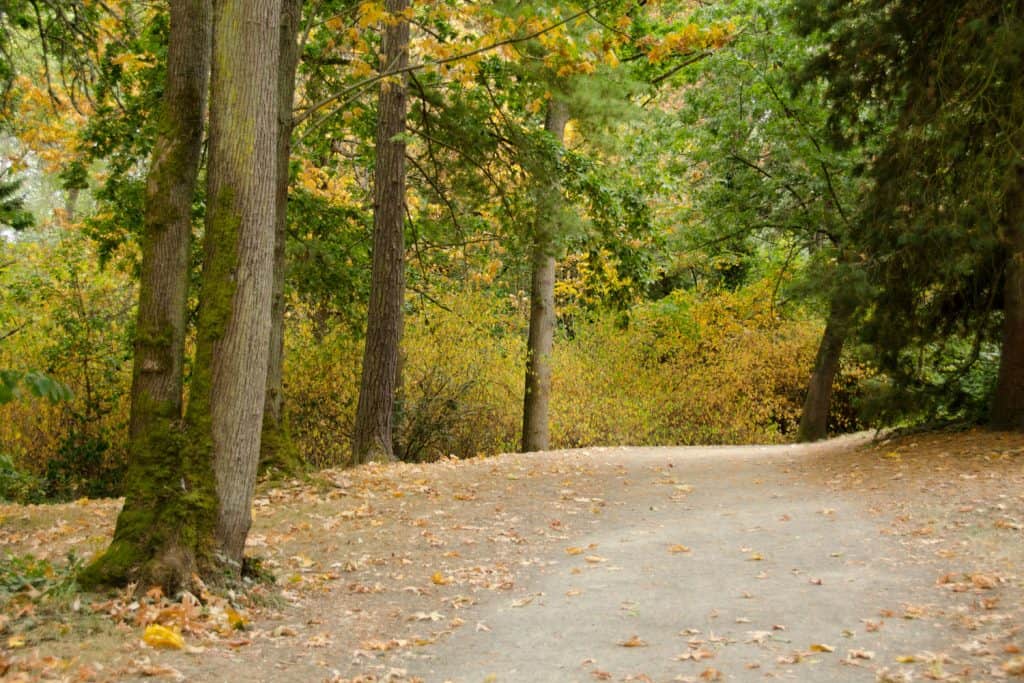
Cedar elm trees are known for growing at a fast rate. But their maximum height ranges between 20 to 94 feet. Their surrounding areas and conditions will significantly impact how tall they get.
For instance, shorter cedar elms will be more common sights in difficult growing conditions like the Edwards Plateau in Texas. But these trees can blossom quickly when given the ideal growing conditions.
Do cedar elms cause allergies?
Cedar elms will start blooming in the late summer or early fall. Their pollen can irritate people with allergies through late fall during this period. You can expect the pollen to cause common allergy symptoms, such as:
- Sinus pain
- Red or tearing eyes
- Headaches
- Itching
- Sneezing
- Wheezing
- Runny nose
- Itchy eyes and throat
- Cough
- Dark circles under the eyes
If you want to learn about other elm trees, check out How Fast Do Elms Grow And How Long Do They Live? [By Type Of Elm]. It’ll answer all your questions while covering some you might’ve never even thought to ask.
How do I know if my elm tree is dying?
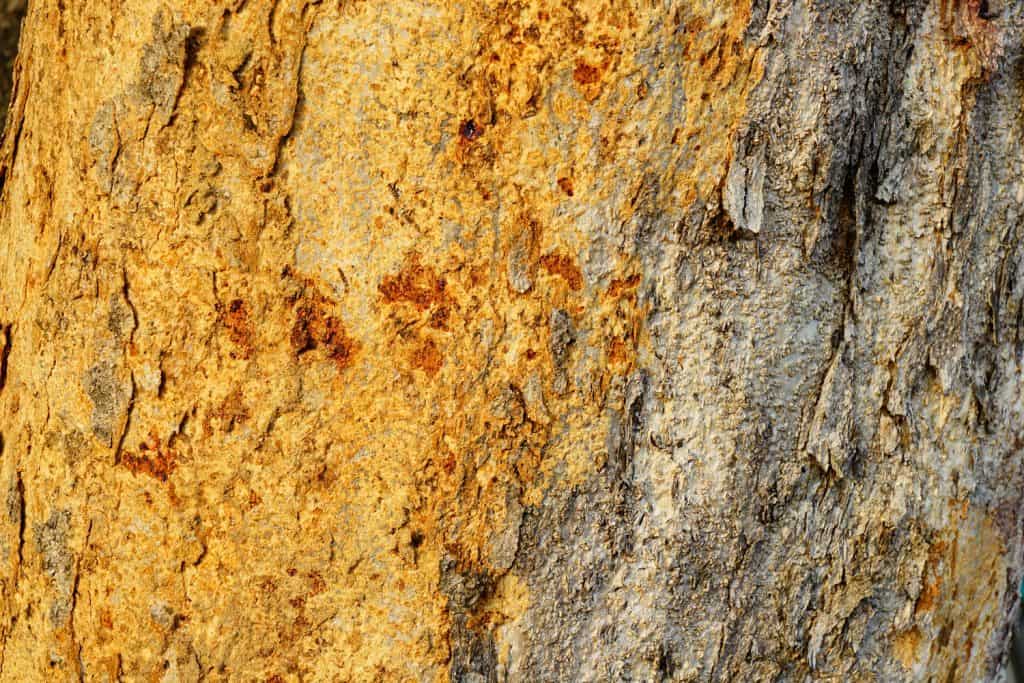
Another essential part of tree maintenance is knowing the worrisome signs. You'll need to know what situations indicate a tree's death. Here are seven troubling symptoms of a dying elm tree that every gardener needs to know:
1. Brown and Brittle Bark or Cracks
A dying cedar elm tree will usually have bark that becomes loose. It'll eventually start to fall off the tree as the condition worsens. It's also not uncommon for a dying tree to have vertical cracks or missing bark.
Experts recommend checking for deep splits that extend into your tree's wood, internal cavities, or external cavities. After all, these cracks create weaknesses that can cause serious damage in severe weather conditions.
2. Only Some Healthy Leaves Left
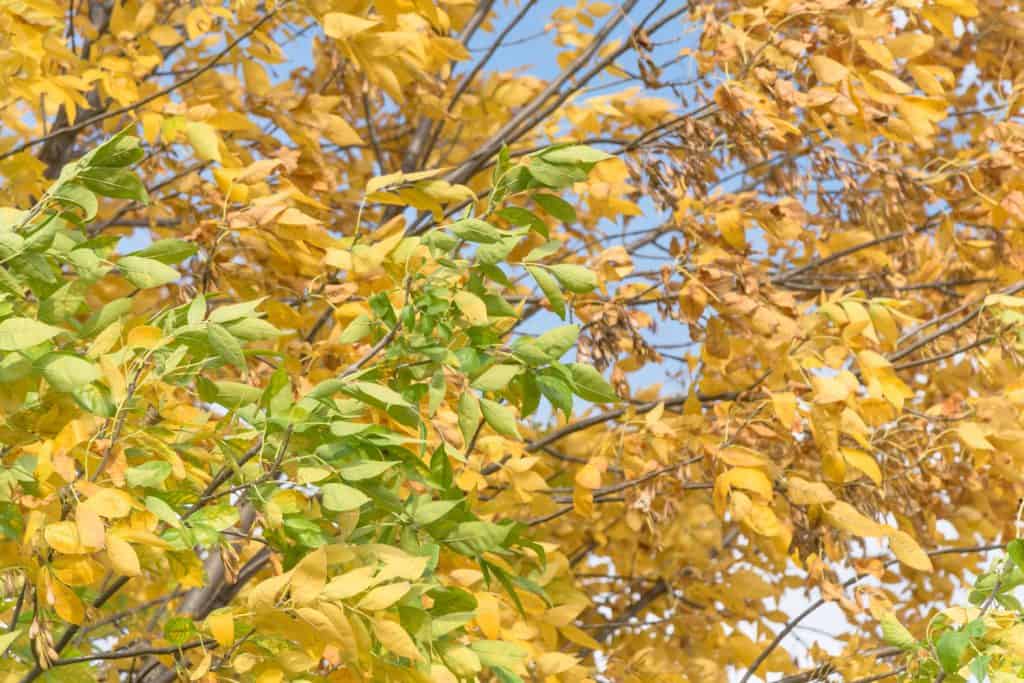
Dying cedar elm trees will often have branches that lack lush green leaves during their growing season. Instead, these trees show only brittle and brown leaves.
You'll also notice dead leaves still clinging onto them deep into the winter season. In normal circumstances, these dead leaves would've dropped to the ground.
3. Pests and Fungus Infestation
Dying elm trees can harbor pests such as carpenter ants or bark beetles. You'll often find these pests in trees that are dying or under stress. On the fungus or bacterial infection side, look for cankers on the bark or mushrooms growing near or on your tree's base.
Both these issues are indications of a tree with rot in its trunk or roots. Over time, the decay will extend further within the tree and cause severe structural damage. It ends up being a rather dangerous thing to have around a home or street.
4. Large Amounts of Dead Wood
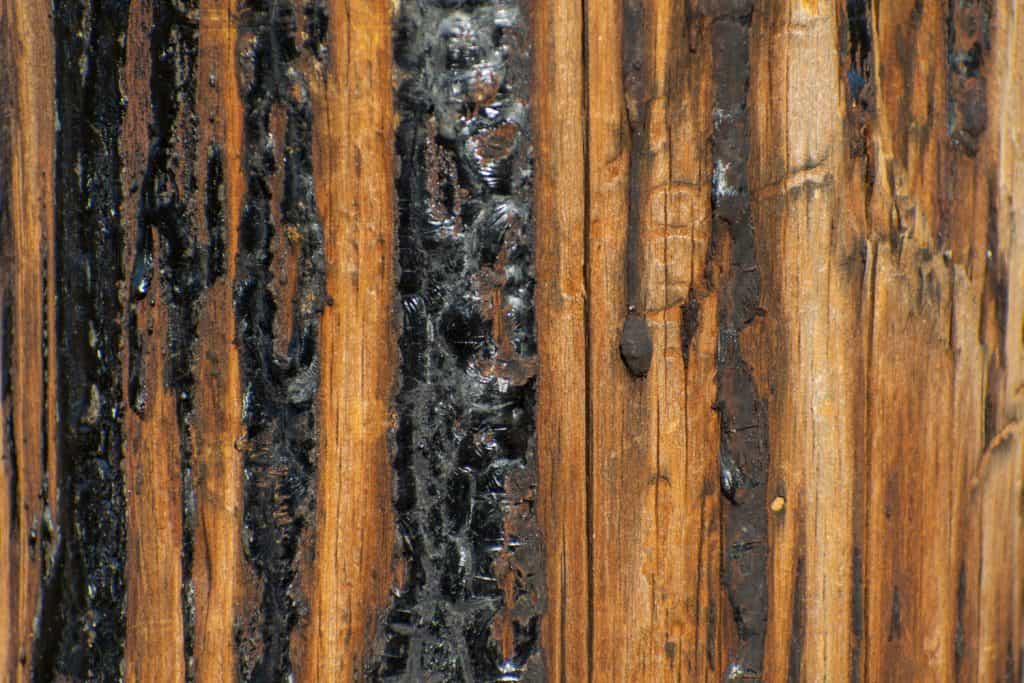
There's no reason to freak out over a couple of dead branches or some dead wood. It doesn't automatically mean your elm tree has started to die. However, a large amount of dead wood can indicate that a tree is either dying or sick.
5. Fails the Scratch Test
Your tree's outer layer of dry bark has the cambium layer beneath it. If your tree isn't dying, the cambium layer will be green. It'll be dry and brown within a dying or dead tree. Testing for it isn't too difficult, as you can use a knife or fingernail to remove a small piece of exterior bark.
It'll then expose the cambium layer to reveal whether the tree is healthy or dying. You might have to repeat this process on several areas of your tree to confirm the severity. It's the only way to see whether the entire tree is dying or if it's only a couple of branches.
6. Signs of Root Damage
Determining root damage isn't always easy because elm tree roots run deep underground. But if you've had recent construction or similar projects near the tree, look for any changes in its health that could point to damaged roots.
Some notable signs of root damage include poor yearly growth, dead branches, and wilted brown leaves within the growing season. If you notice any of these issues, a damaged root system could be the culprit.
7. Develops an Odd Growth Pattern
An elm tree with an odd growth pattern, such as a sudden or gradual lean, can indicate general weakness or a structural imbalance. In most cases, a tree that leans more than 15 degrees has suffered from root or wind damage.
It's also worth noting that more giant trees that have tipped due to intense winds rarely recover. Instead, they usually end up dying much sooner than their expected lifespans.
In Closing
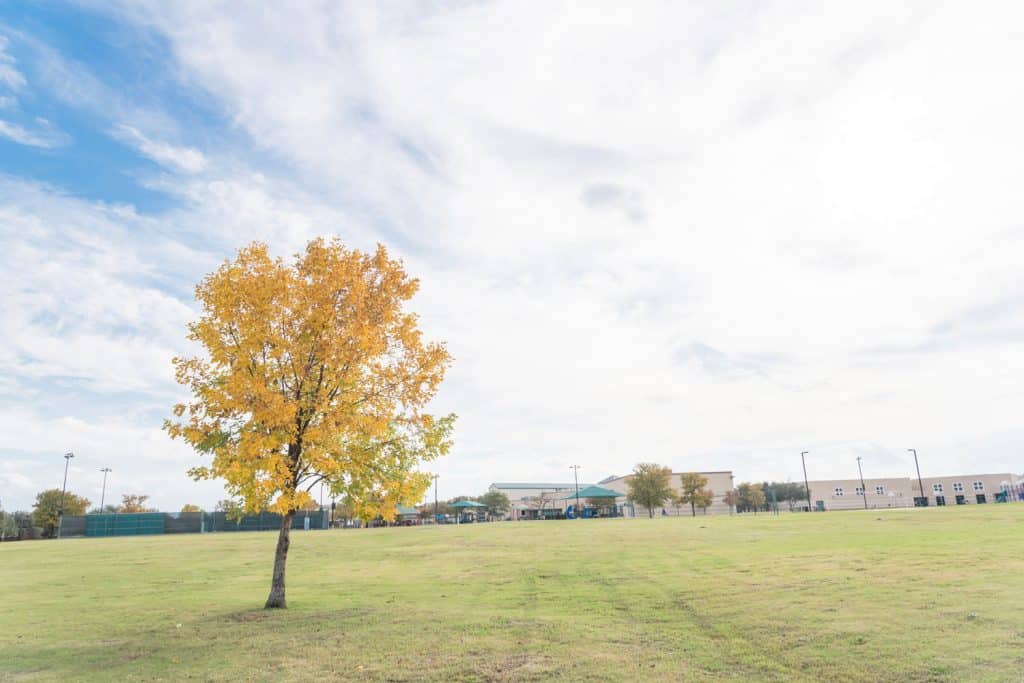
Cedar elm trees can live for many years when provided with the proper maintenance and support. If you establish a pruning routine in its younger years, it'll have a decent chance at reaching that 100-year mark.
We hope our discussions about cedar elm tree lifespans answered your questions. But if they didn't, feel free to leave a post in the comment section. We'll make sure to answer each one as soon as possible. Thanks for reading!

